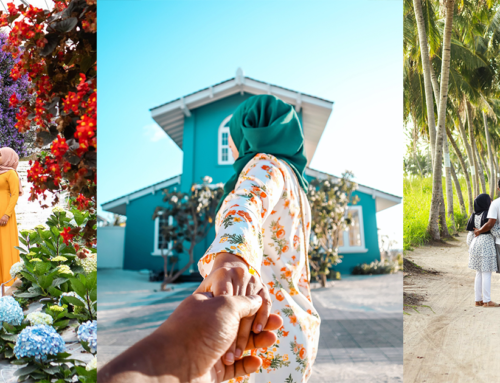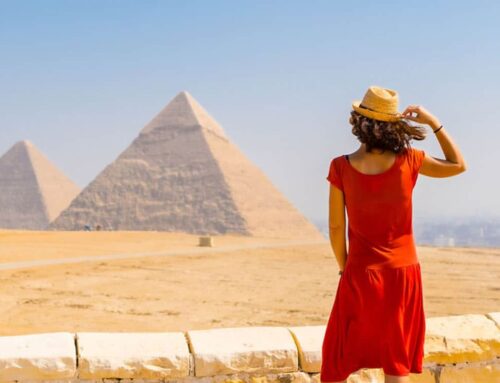Words by Axam
You see, here’s the funny thing. Most of the money that pays for your local infrastructure, the salaries your civil servant family members receive, and also the government subsidy that, more often than not, covers a substantial amount of your medical bill when you go reckless driving and end up in a heap, comes from pockets of foreigners just looking for a good time.
I’m serious, think about it. What is this, fleeting yet almost inevitable industry that looms in our background, keeping our economy afloat, in its basest form? Isn’t it just about people coming over and having some fun and paying good money for it?
Okay, let’s not get too philosophical about this. This mega-industry, worth hundreds of millions of US dollars every year, catering to over a million people across all four seasons in the Maldives alone, may seem well out of reach for the common man to invest or get themselves involved in except as an employee to these mega-rich companies. Wow, okay that was a mouthful of a sentence, but here’s the catch; getting involved isn’t as hard as you might think, and no, you won’t need an uninhabited island of your own either.
Cue ‘Guest House’ tourism.
I personally didn’t have as much of an in-depth understanding of this industry as I’d like, so I decided to reach out to someone who knew this better than most.
Contrary to popular belief, Guest House Tourism didn’t just begin in 2008, according to my new friend Mr. Abdullah Rasheed (Aisee). Apparently, guest houses existed in the Maldives in various islands such as Himmafushi, Dhiffushi, Maafushi, and Guraidhoo way back in the 1980s too, until 1984. This was when the government imposed a blanket ban on all guest houses, citing that they wanted to give “Exclusivity” to the resorts, and that managing an entire uninhabited island as a resort was more beneficial than allowing local islands to conduct guest house businesses. Now, obviously there’s going to be a lot of controversy on nearly every government decision, so commenting on that I would leave for another day, only recounting this information as historical facts so we can fully appreciate the evolution to this industry. Aisee mentioned to me that this ban created a huge rift between the common man and the hospitality industry, taking the benefits away from the local islands and diverting it towards “exclusive” beneficiaries, so by 2008, a lot of lessons were learnt and ideas were pitched in. In 2008, the government officially retracted the ban and allowed locals to conduct guest house businesses once again.
And the timing couldn’t have been better.
Globalisation allowed resorts to continuously promote the Maldives as a premium tourist destination, and all this effort actually helped boost the guest house tourism to previously unreached levels. The main reason loops back to the introduction; tourism is about people paying to have a good time, so as demand and supply dictates, the lower the cost, the more people would prefer it (economics students, don’t hate me for making it so simplified). Those tourists who couldn’t afford saving up an entire year of wages to have their honeymoon now found a cheaper alternative, to experience the scenery and the relaxation, without having to pay 5* prices. They could spend the same amount for a month at a guest house, which they might have to pay for four days at a resort! Okay, I might be exaggerating here, but the comparison does ring true, I’ve googled.
So here we are, guest houses being a more cost-effective alternative to resort tourism. What else makes this sort of hospitality so different? According to Aisee, guest houses and resorts aren’t actually in competition at all. He very eloquently explained to me that these two industries stand alone due to a number of reasons; firstly, the resort stay is an all inclusive package, of bed and breakfast, of staying in an entirely private island (without any of the locals), where the whole population of the island barring the tourists themselves, are all service providers. This industry caters to a very specific type of traveller, and guest houses have their own target clientele as well. The guest houses are more suitable for the backpacker, or the people who would like to experience not the Maldives as a premium destination, but the Maldives as a home, a community, to see and taste the culture without the need of butler services and inclusive water-sports deals. Of course, water-sports is not off the menu at guest houses either, but in most cases are businesses run by separate parties, which actually promotes the dissemination of earnings around the island community a lot more effectively. Guest houses let tourists experience lives as we Maldivians would (without all of the worries we have daily, of course) and this experience was worth every penny for those coming to visit. Guest houses were truly distinct experiences from resorts, and those coming to visit knew this too.
So here I am, excited to know that I could have a plot of land in an inhabited island, build it up and lease out rooms for tourists, make them a local dish for breakfast (obviously I’d hire someone to cook, I’d rather not accidentally give food poisoning to my patrons by cooking myself), and let them roam around the island and enjoy. Doesn’t it seem like a Californian gold rush? Where every opportunity can and should be utilised, and we could definitely better our means as long as we try our best? Aisee could tell I was enthusiastic, so, with his vast well of experience and knowledge, imparted wisdom and caution.
He told me I wasn’t the only one who saw dollar signs at the prospect of earning a quick buck, and there was a lot to learn from everyone else’s experiences. Travelling around the Maldives during his work in the hospitality industry both on a personal and government level, he realised a lot of investors and entrepreneurs were jumping in feet first without realising the line between sustainable and unsustainable development. His knowledge granted him a valuable insight on doing more with less, and this was what prompted him to write a book, more like an instruction manual, for guest house tourism (more on this later).
Another main point of note, is that a guest house, according to him, functions optimally and most beneficially for the community by not being too big to handle, simply put. The biggest challenge, he describes, was overdevelopment. Examples for this, he pointed out, would be Maafushi, where the super-modernisation has now taken away the natural concept of the Maldivian holiday. It felt more suburban than the typical Maldivian experience, and added to this, the number of rooms was proportional to the number of foreign staff needed to compensate for the establishment too. Fifteen rooms, upwards to a hundred rooms in one establishment becomes a detriment to the community by creating a leech to the once communally-beneficial industry. The whole drive that restarted guest house tourism in the Maldives, was now being countered, and the distinction between resorts and guest houses began to blur. This was where problems began to arise, Aisee told me sombrely.
So, should I be worried and distraught? No, my new friend assured me. Currently on the executive board MMPRC to contribute all he can for this industry, Aisee believes there is a way to countermand the unsustainable development. He says the most effective way would be for the government to draw distinctions between the major industries, and here’s a description in short:
- Resort Tourism where the accommodation is confined to on one whole uninhabited island
- City Hotels where services are provided in rooms exceeding a stated number, with in-house utilities, water, power and other basic necessities (as per easy-to-follow regulations)
- Island Hotels where services are provided in islands other than cities, in a number of rooms exceeding a stated number, with in-house utilities, water, power and other basic necessities (as per easy-to-follow regulations)
- Guest Houses where accommodation is on a relatively few number of rooms, (10 to 20 rooms, as per regulations)
- Safari accommodation (live aboard accommodation with stated specific services as per easy to follow regulations).
I sat back after this conversation, feeling a sense of enlightenment I’m hoping to impart on everyone else too. Aisee assured me that the future does look bright, with the easing of pandemic regulations and the current discussions within the government, and this meant that in time, we all could become a part of the economy of ‘paying for a good time’. I do not apologies for the innuendos you might pick up from this statement because you know I’m right.
In this small archipelago nation, where a 1192+ islands are the definition of beauty and serenity, the tourism industry should be looked at not as a risky venture but a possibly fully sustainable enterprise, an enterprise that we, the common people, could play a part in. Tourism isn’t exclusive just for hospitality service providers to benefit from; water-sports, music and art, caterers of all sizes and abilities, local craftsmen and women who make souvenirs, and even the very people involved in transportation and seafaring, could benefit so very much if the development entered around sustainability. I hope this piece of writing empowers you to seek out your own avenues of involvement in this industry, and also motivates you to learn more about how to make the most of it, especially coming out of such troubling times as we’ve had in 2020. This economy definitely has a million and one ways to be benefit from, and by working together as one nation, one community, we can ensure that we can all move forward into the future together.
Special thanks to Aisee for giving me a bite of his valuable time to pick his brain and learn so much. If you’re interested in his book, why not look him up on Twitter or Facebook? I’m sure you’ll find him, fighting the good fight, and imparting a lot of wisdom for the layman on all social medias, and inspiring people the way I hope I can too.









Leave A Comment